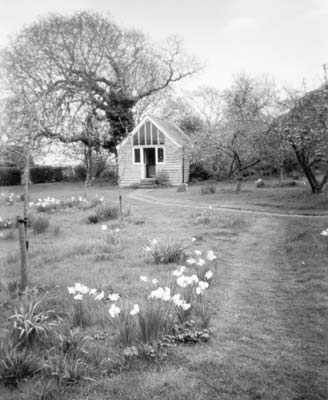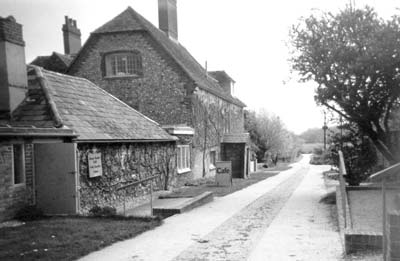South England — Exploring the National Trust properties of Lewes
by Rita Berman, Chapel Hill, NC
In April ’06 I visited Lewes, an attractive historic town on the banks of the River Ouse in the south of England. Only 30 minutes by train from Gatwick airport or an hour’s train journey from London, the town is home to numerous antique shops and bookstores and many historical sites, including Lewes Castle, Anne of Cleves House & Museum and Bull House, formerly known as the Old Bull Inn, where Thomas Paine once lived.
I booked a room in the White Hart Inn Hotel (High Street, Lewes; phone 01273 476694, www.whitehartlewes.co.uk), a 16th-century coaching inn famed for its association with Thomas Paine. Paine was a member of the Headstrong Club that met in an upstairs room of the hotel. Here he stated his revolutionary views, later published in “Rights of Man.” Paine is credited with being the first person to use the phrase “the United States of America,” and his writings are said to have inspired the colonists to claim their independence.
The midweek price break reduced the cost of my room with half board (bed, breakfast and dinner) to £63.50 ($124) per night. All bedrooms have facilities en suite, and there is a modern annex to the hotel.
My room was in the original building, which lacks an elevator to the upper floors. Hotel guests have access to the health and fitness club with its indoor heated pool.
Day-tripping
I found Lewes to be a good central location for visiting many attractions in the south of England. I took a taxi to the nearby village of Rodmell to revisit Monk’s House, the permanent home of Virginia and Leonard Woolf after their London home was destroyed in World War II.
Now owned and maintained by the National Trust, the house is open to the public from April through October on Wednesdays and Saturdays from 2 to 5:30 p.m. The entrance fee is £3.30 ($6.50) per adult.
Inside the house, the rooms are low-ceilinged and furnished with chairs, tables and screens painted by Virginia’s sister Vanessa Bell and her partner, Duncan Grant. Virginia Woolf’s bedroom was built on as an extension to the house and is accessible only from the garden. It was simply furnished with a narrow single bed and shelves of books.
I then continued by taxi to Charleston Farm near Firle, about seven miles east of Lewes. This had been the home of Vanessa Bell and Duncan Grant, and its size and numerous rooms make it quite a contrast to Monk’s House. Charleston reflects brightness and color; the walls, doors and furniture were painted and decorated by Grant, Bell and their friends. Influenced by Picasso and the post-Impressionists the appearance was unconventional but attractive.
Also on site are a studio café, a craft shop, a gallery and a walled garden with benches. Many of the artists and thinkers who were members of the Bloomsbury Group, John Maynard Keynes, Roger Fry, Lytton Stachey and E.M. Forster among them, were frequent visitors to Charleston House.
The house is closed on Mondays and Tuesdays but open the rest of the week from April 1 to Oct. 29 (2-6 p.m.). In July and August it opens at 11:30 a.m. Guided tours are given on Wednesdays, Thursdays, Fridays and Saturdays. Admission costs £6.50 ($12.50).
Churchill’s Chartwell
Chartwell, Winston Churchill’s former home in Kent, was another National Trust property that I visited. It is located two miles south of Westerham, Kent (the closest railway stations are Sevenoaks and Oxted).
This large mid-Victorian house is surrounded by 80 acres of gardens, lakes, ponds and countryside. You could easily spend a whole day there.
There is a picnic area available in addition to a restaurant, and the kitchen garden was being restored to its 1930s-’40s appearance.
Sir Winston Churchill bought Chartwell in 1922. He had it modernized and, except for a period during the Second World War, it was his family’s home.
A garden wing containing three large, attractive rooms — the dining room, drawing room and Lady Churchill’s bedroom — has been kept very much as they were in Churchill’s day.
The study contains many objects relating to his life, including the mahogany writing desk that he inherited from his father.
Touring the house and gardens, I saw many drawings and paintings done by Churchill. I was particularly interested in the guest bedrooms that have been turned into museum and uniform rooms featuring many gifts and awards, including the Nobel Prize for Literature awarded to him in 1953.
The house is open from mid-March to late October, Wednesday to Saturday, 11 a.m. to 5 p.m. Entry costs £10 ($19.50) per adult. To tour the garden and studio only, the fee is £5. Parking is free.



